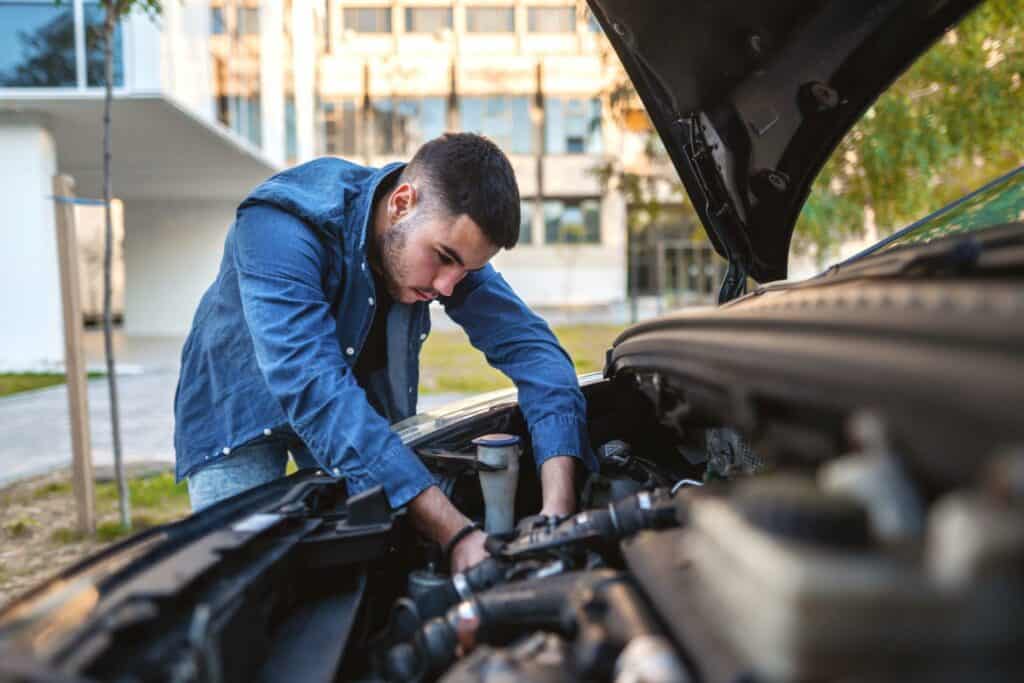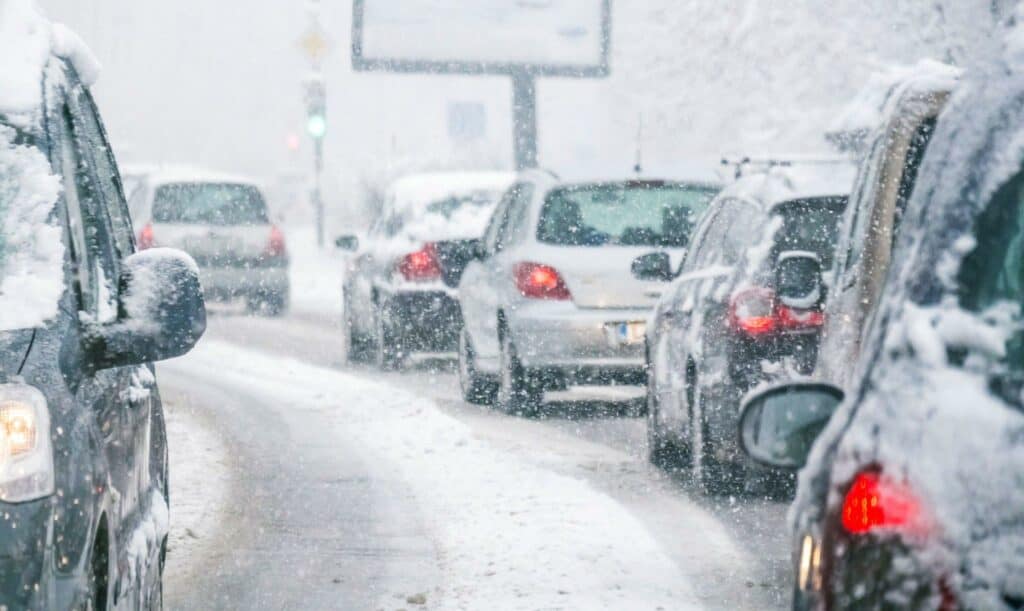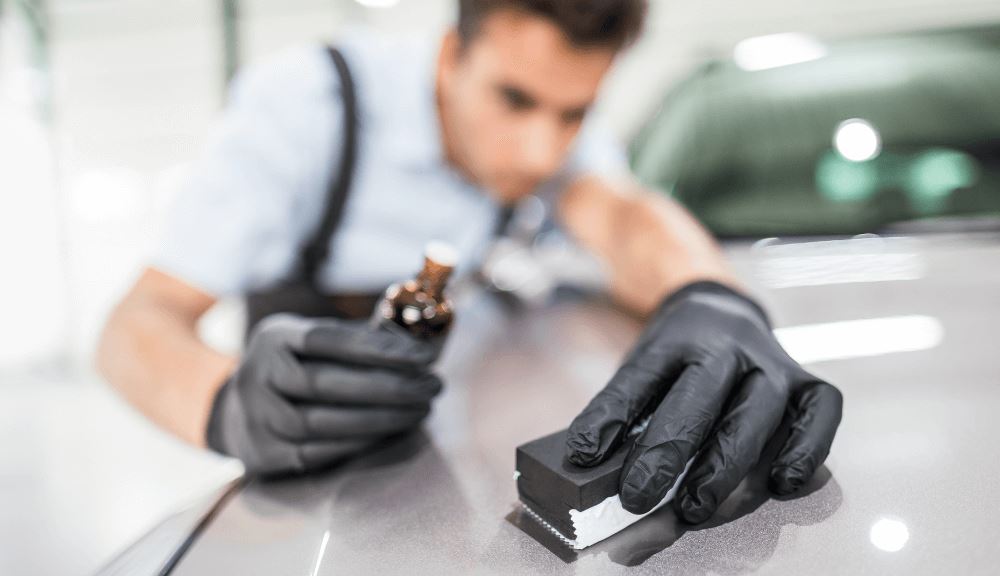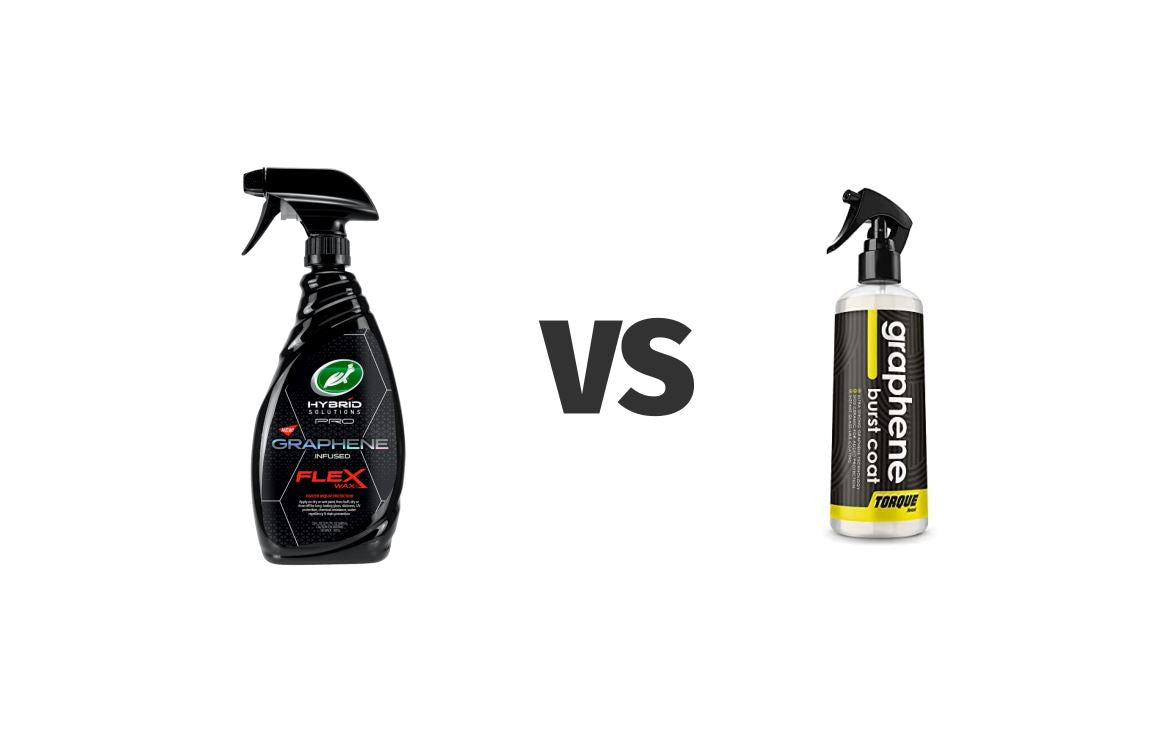Who doesn’t love the changing seasons as the year winds down? Beautiful autumn leaves, football, and colder weather are all part of the pure excitement of fall.
However, you shouldn’t forget to take care of your car. Of course, you should be doing maintenance on your ride year-round, but there are some things to ensure you address as summer ends and fall slowly turns to winter.
Not to mention…life happens. It’s not out of the ordinary if you’ve been ignoring that check engine light for most of the year. Well, if something goes wrong and there’s eight inches of snow on the ground, you’re going to be one unhappy ice cube wrenching your ride in your driveway. Now’s your chance to be proactive and it doesn’t have to be intimidating. Let’s get started.
Fall Vehicle Maintenance Check List

The cold weather of fall and winter can be hard on your vehicle’s systems, especially if it’s gotten a lot of use over the summer.
Breaking down is unpleasant no matter the season, but it can be especially distressing in the middle of winter, especially if you live in an area that gets snow or has harsh, cold temperatures. So it’s important to make sure your vehicle is in good shape before winter really sits in.
Your Fall Car Care TODO List Progress is Saved to Your Web Browser
Save this link to come back to this checklist later.
#1 – Check Your Heater
It’s probably been a few months since you last used your car’s heater, so it’s a good idea to test it and ensure it’s working properly. Once it cools off outside, get in your car, turn the heater on, and wait for hot air to come through the vents.
It may take a few minutes for everything to warm up, but if you feel like it takes longer than it should, or if hot air never comes through the vents, you should start diagnosing what’s wrong. If it’s a bad heater core, you’re in for a big repair! But nonetheless it’s best that you’ve learned about the issue now.
#2 – Apply a Hydrophobic Graphene Coating
★★★★★
High Rated Reviews from 150+ Customers
After a simple spray and wipe down using a microfiber towel, your car’s paint job will be protected for up to an entire year. Your car’s top coat impenetrable to any chemical, liquid, or environmental contaminant there is. In a matter of minutes!
You’re going to up against freezing rain and inches of snow. Defend your car by applying a graphene coating. Graphene is a material that is 200x stronger than steel. It is just now becoming a popular ingredient in automotive paint protection products. One of the easiest, most popular ones to apply being Graphene Burst.

Applying a graphene coating to your vehicle does a few things. First, it will make your ride look gorgeous. It will provide the kind of shine that would normally take a weekend of waxing. Next, it will add protection from surface scratches and will even add hydrophobic properties. This means it will repel water. Rain will sheet right off and snow will have a tougher time sticking.
#3 – Check Your Tires
Tire pressure and tread depth are important considerations going into winter. Having inappropriate tire pressure can impact both your car’s fuel economy and your tire’s lifespan. It can also predispose your tires to blowouts if the pressure is too high and reduce your tire’s responsiveness if it is too low, making it more difficult to react to icy or snowy conditions.
You should also check your tire tread before any ice or snow hits. Your tread provides traction on the road; if worn too low, you’re more likely to slide whenever the road gets wet or icy. Unfortunately, replacing the tires is the only way to handle worn treads.
#4 – Check Your Brakes
With snow and ice making the roads slick, a good brake system is essential to driving down winter roads safely. Checking your brakes during the fall can better prepare you for winter travels.
If you hear any squeaks, whines, or any other noise when you come to a stop, that’s a clear sign that your brakes need work. However, that doesn’t mean you shouldn’t get them checked regularly to keep them in good working order.
#5 – Super Clean and Detail Your Car
No maintenance plan is complete without a car detail. Of course, you should be washing your car regularly, but it’s especially important in the fall. Your car has probably been through a lot over the summer, and you need to ensure you get rid of any contaminants stuck to the finish. This will prevent too much accumulation as you go through fall and winter.
There are several steps to detailing your car, and if you detail regularly, you may not need to do every step every time. However, you should use high-quality products that suit your skill level every time you detail your car to get the best results.
#6 – Replace Your Windshield Wipers
Windshield wipers are essential to visibility and safety. They allow you to see through unfavorable weather, including rain and snow. However, they can become cracked and worn under the summer sun, reducing their ability to clear your windshield effectively. If your windshield wipers leave behind streaks or smudges, they must be replaced.
#7 – Check Your Oil
Oil is required to lubricate all the moving parts in your engine properly. Therefore, one of the most important things to do is to check your oil before cold weather sets in. Letting your oil get too low or going too long between oil changes can create excessive wear and tear, potentially leading to complete engine failure.
If it’s a little low, top off your oil to ensure it doesn’t run out. If your oil looks dirty or is reaching the recommended time between changes, go ahead and change it before it gets too cold. Depending on your climate, you may want to change your oil to a winter-weight oil, even if it isn’t time for a change. Winter-weight oils maintain an appropriate viscosity in low temperatures and offer better turnover and protection.
#8 – Check Your Battery
Hot summer heat and cold winter weather both put a strain on your battery. Fall is when you should check if your battery is going to hold out for much longer. If your battery has started to lose its charge, it’s best to replace it to avoid finding a dead battery in freezing temperatures. Especially if your car just doesn’t start when you need to get to work. Avoid those frustrations by being proactive now.
#9 – Check Your Fluids
Oil isn’t the only fluid your car needs to run properly, and you should check it all in the fall. Antifreeze, brake fluid, and power-steering fluid are some of the major ones to be concerned about, but you should still be checking all your fluid levels.
If any fluid is significantly low, it may be worth looking for cracked caps or gaskets or taking your car to a mechanic to check for and repair any leaks before they become more of a problem. You may also consider switching your windshield washer fluid to a winter formulation that’s less likely to freeze and can help keep your windshield clear of ice.
#10 – Check Your Lights
The short days and cloudy weather commonly seen during winter can reduce visibility, making it difficult for other cars to see you on the road. Checking your light during the fall before the days really start to shorten can better prepare you for these challenges.
Take a few minutes to walk around your car with the lights on to ensure they’re functional and easy to see. Any bulbs that are dim or burnt out should be replaced.
Protection From The Seasonal Elements

Fall and winter can also be hard on your car’s exterior. Falling leaves, snow, and road salt can all take a toll on your car’s finish and damage the paint if not handled properly. Therefore, it’s best to be prepared and ensure your vehicle is ready for the elements before winter truly sets in.
Fall
Top Tips:
- Avoid parking under trees if possible
- Don’t let leaves that fall on your car sit for too long. Remove them carefully and clean your paint with a waterless detailer.
- Clear your air intake of leaves several times during Fall
- Clean away sap and pollen right away using a professional sap / sticky residue cleaner
- Put a protective and hydrophobic coating on your ride like Graphene Burst. This will make it difficult for leaves to damage your paint as well as make your paint slicker so they slide off easier.
While fall is a great time to prepare for winter before it starts snowing, the season does have its own concerns. For example, falling leaves tend to get stuck in your car’s nooks and crannies, where they can block air intakes and drain holes, get caught under the windshield wipers, and stick in the areas around sunroofs. Some leaves also have sap and pollen that can stick to your car and damage your finish, especially when the leaves are wet.
While it’s best to avoid parking under trees where leaves may fall onto your car, if that isn’t possible, remove the leaves as soon as possible to minimize the risk of damage. You should clear them gently using your hands or an air blower with light pressure. This is because using too much force or air pressure can push leaves into hard-to-reach places or create micro-abrasions as the leaves drag across your car.
★★★★★
High Rated Reviews from 150+ Customers
After a simple spray and wipe down using a microfiber towel, your car’s paint job will be protected for up to an entire year. Your car’s top coat impenetrable to any chemical, liquid, or environmental contaminant there is. In a matter of minutes!
You can also protect your car from damaging leaves using a seasonal wax, sealant, or longer-lasting coating, like Torque Detail’s Graphene Burst. This innovative product won’t replace removing leaves from your vehicle sooner rather than later, but it will create a layer between your paint and the leaves, pollen, and sap.
Winter
Top Tips:
- Regularly wash your car and always clean road salt out of the undercarriage of your car
- Apply a protective coating that creates a hydrophobic layer on your paint that reduces snow accumulation like Torque Detail Graphene Burst.
- Use a Waterless Wash in situations where you can’t easily bust out the garden hose.
Winter is notoriously harsh on your car’s exterior. The road salt, snow, and less frequent washes in freezing weather add up and can leave your car looking dull when spring rolls around. Unfortunately, while the best way to minimize the post-winter dullness is to maintain your car washing schedule, that isn’t always possible, especially in areas with heavy snowfall.
If you can’t wash your car as often during the winter as you did during the summer, you can still take steps to protect your vehicle from the elements. Waxes and sealants can provide an extra layer, but they need regular maintenance that may be less appealing during wintertime.
Another option would be a coating that requires less effort to maintain but still offers protection for your car’s finish. Some products, like Torque Detail’s Graphene Burst, create a hydrophobic layer that minimizes snow accumulation on your vehicle, especially when driving. You can even spray some on your window to help improve visibility in snowy weather.
While freezing weather can often make it difficult to do a traditional car wash, using a waterless car shampoo can help reduce the amount of dirt and grime that builds up on your car, though it won’t get everything. You should also use a product to protect your wheels and tires from damage from the cold weather and road salt and keep your entire car looking good throughout winter.
Summary – Peace of Mind Maintaining Your Ride
There you have it! We’ve covered the most important steps to keep your car operating in working order throughout the seasons and also tips to protect your ride from mother nature. If you follow through all these steps, your relationship with your car this season should be smooth and steady. Less stress, happier life. Enjoy!









